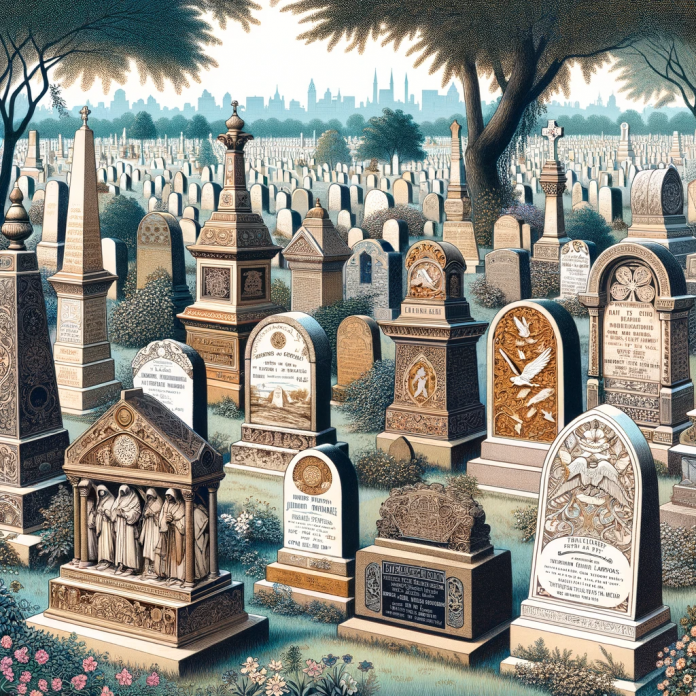The significance of tombstones and monuments extends far beyond their physical presence in cemeteries and public spaces. They serve as markers of history, symbols of cultural heritage, and tangible reminders of personal stories and collective memories. In this exploration, we delve into the many facets of their importance, from their historical context to their artistic value, and their role in societal memory preservation.
Historical Context of Tombstones and Monuments
From the ancient pyramids of Egypt to the modern gravestones in local cemeteries, tombstones and monuments have been an integral part of human civilization. They provide a snapshot of the historical periods they were erected in, reflecting the societal norms, religious beliefs, and artistic styles of the time.
Monuments, in particular, often commemorate significant events or individuals, serving as physical embodiments of historical narratives. They offer insights into the past, allowing us to understand the milestones that have shaped societies and nations.
The Evolution of Tombstone Designs
The design and inscriptions on tombstones have evolved significantly over time, reflecting changes in societal attitudes towards death and the afterlife. Early tombstones were simple markers, while later designs incorporated intricate carvings and detailed epitaphs. The evolution of tombstone designs provides a unique perspective on the changing cultural and religious beliefs of societies.
Modern tombstones often incorporate personal elements, such as favorite quotes or symbols representing the deceased's hobbies or passions. This shift towards personalization highlights the increasing importance placed on individuality and personal expression in contemporary society.
Artistic Value of Tombstones and Monuments
Tombstones and monuments are not just historical markers; they are also works of art. They showcase the craftsmanship and artistic sensibilities of different periods, making them invaluable resources for art historians and enthusiasts.
From the intricate carvings on Gothic tombstones to the minimalist designs of modern monuments, these structures offer a visual journey through the history of art. They reflect the aesthetic trends of their time, as well as the personal tastes and preferences of those who commissioned them.
Symbolism in Tombstone and Monument Designs
The use of symbolism is a common feature in tombstone and monument designs. Symbols can convey a wealth of information, from religious beliefs to personal attributes of the deceased. For instance, a dove may symbolize peace, while an open book could represent a person's love for learning.
Understanding the symbolism in these designs can provide a deeper appreciation of the artistic value of tombstones and monuments. It can also offer insights into the cultural and spiritual beliefs of different societies and periods.
The Role of Tombstones and Monuments in Memory Preservation
Tombstones and monuments play a crucial role in preserving personal and collective memories. They serve as physical reminders of individuals and events, helping to keep their stories alive for future generations.
For families, a tombstone is a lasting tribute to a loved one, a place to remember and celebrate their life. For societies, monuments commemorate shared histories and collective experiences, fostering a sense of community and continuity.
Monuments as Sites of Collective Memory
Monuments often serve as sites of collective memory, places where communities come together to remember and reflect. They can commemorate significant events, from wars and revolutions to achievements in science and culture. These shared memories can strengthen community bonds and foster a sense of shared identity.
However, monuments can also be sites of contestation, reflecting differing interpretations of history. As such, they can serve as catalysts for dialogue and understanding, promoting critical engagement with the past.
Tombstones as Personal Memorials
Tombstones serve as personal memorials, preserving the memory of individuals for posterity. They provide a tangible link to the past, allowing descendants to connect with their ancestors. The inscriptions and symbols on tombstones can offer insights into the individual's life, their values, and their relationships.
Visiting a loved one's tombstone can provide a sense of connection and closure, offering a space for reflection and remembrance. As such, tombstones play a vital role in the grieving process, helping individuals and families cope with loss.
Conclusion
The significance of tombstones and monuments is multifaceted, encompassing historical, artistic, and societal dimensions. They are more than just physical structures; they are markers of history, works of art, and vessels of memory. By exploring their many facets, we can gain a deeper understanding and appreciation of these enduring symbols of our shared human experience.


-banner.png)





